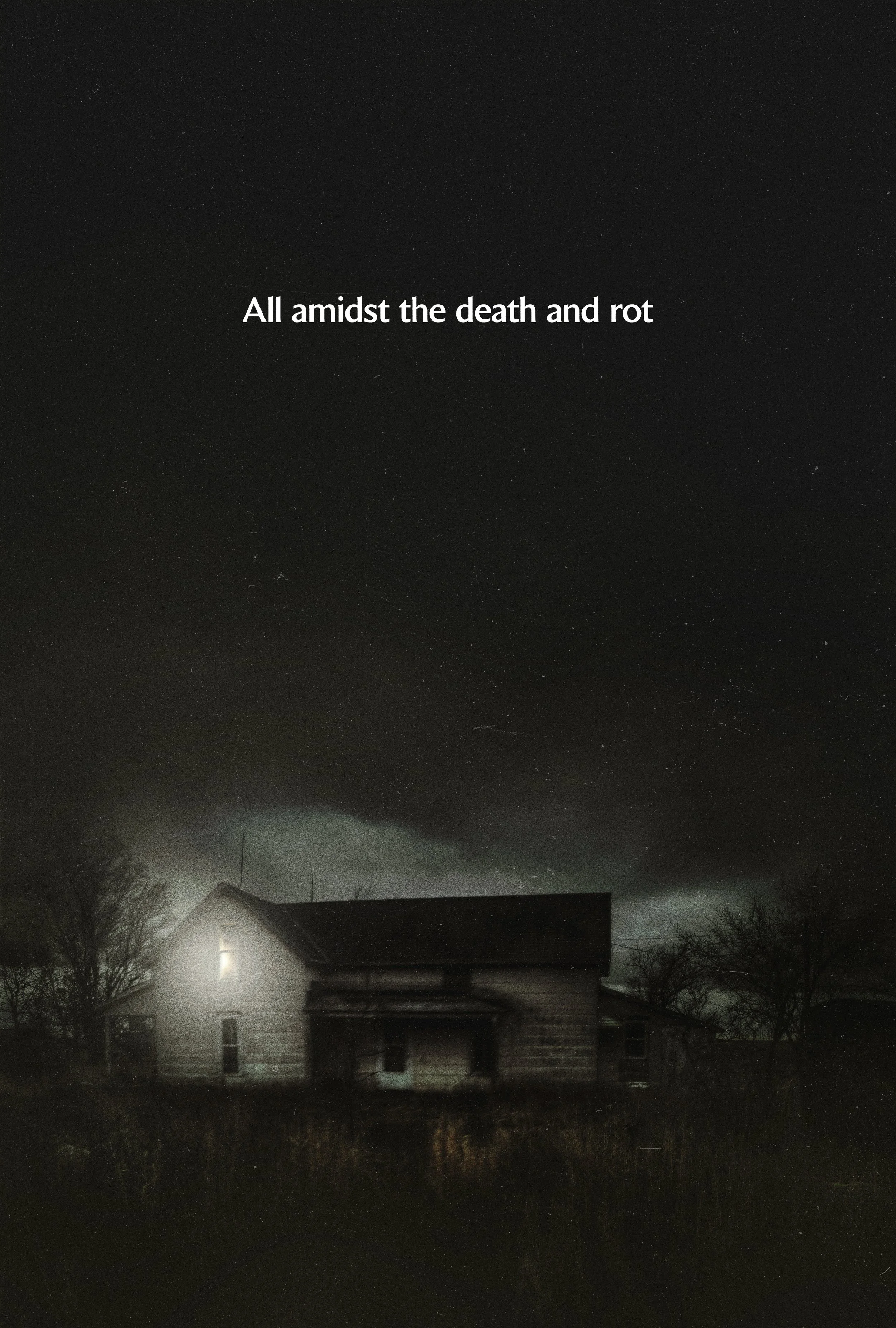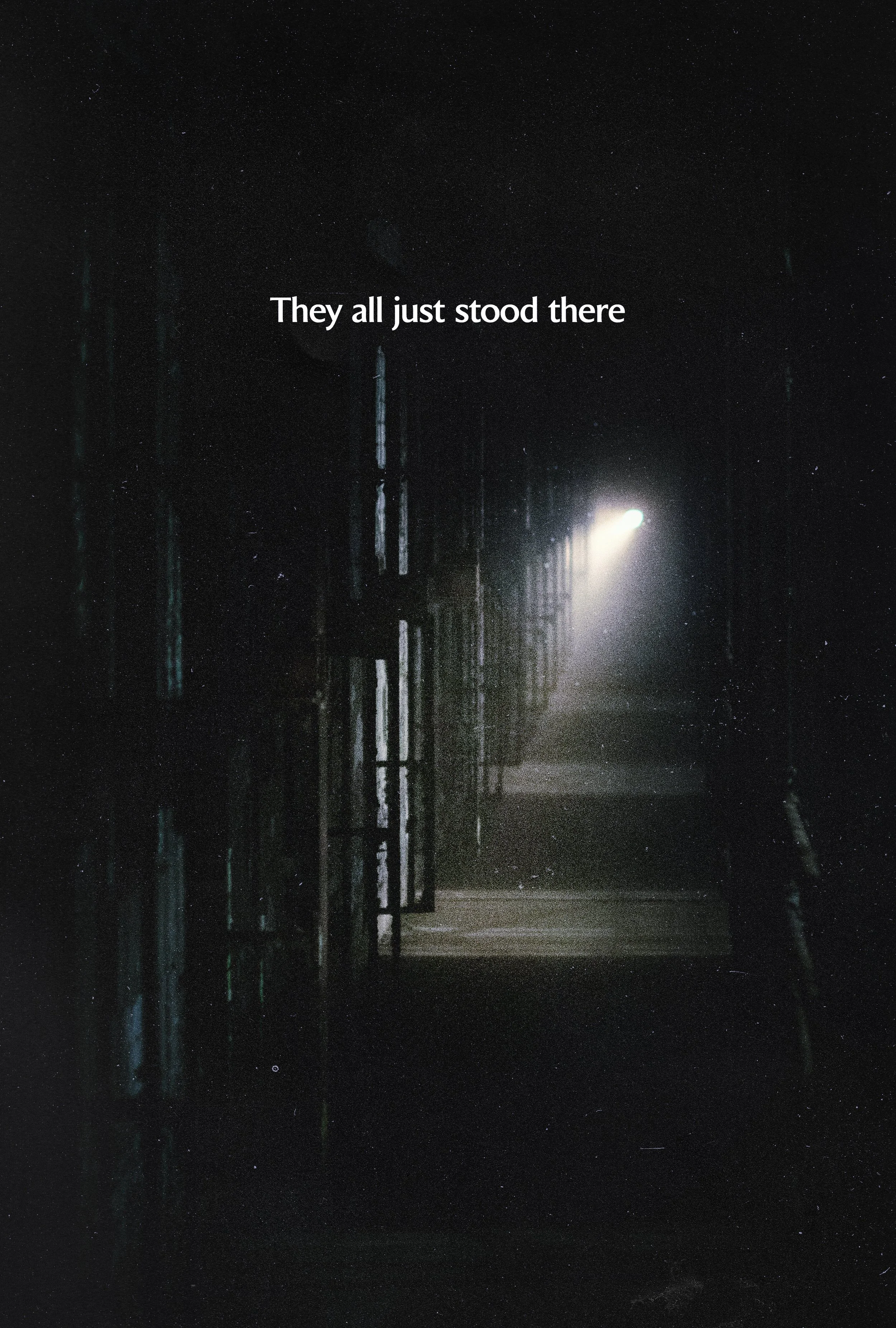Patrick Lawrence Talks Horror in the Edit of “Shelby Oaks”
Before Patrick Lawrence became a film editor, he was a musician. While the two might not seem like they have anything in common, both rely on a sense of rhythm to be successful. In music, the drummer is the one who’s keeping things on beat, the backbone of the song. In film, the editor is the one who creates the pace of the film. While it’s the director’s vision and the screenwriter’s words, it’s the editor’s rhythm that holds the movie together.
“I wanted to be a musician,” Lawrence says. “Then I was like, what would I do with my life if I wasn’t a musician? I like movies. I think I can make movies. I’m pretty creative. That’s what led me on this journey, but it wasn’t until much, much later that I saw the connection between drumming and editing.”
Photo by Michael Ori
“I have this internal rhythm, like how long I need to be in a shot, and I think it comes from being a drummer. I was a set drummer, and I eventually got into doing electronic drumming, which is what I do now. A lot of that involves programming the sounds. It’s become an extension of editing. When I’m editing and I’m messing with waveforms or adjusting clips, it’s kind of the same thing I’m doing with percussion now, but only on the electronic side of things.”
If you want to get to know an editor, ask them what they cut on. For a long time, Avid was the gold standard in Hollywood, and it’s still what a lot of productions default to. Final Cut and DaVinci Resolve are other contenders, but Premiere has become a popular choice with the new generation of editors.
“If you’re a young editor, learn everything,” Lawrence advises. “Resolve is really huge right now. It’s free. You can’t beat that. Learn it, but don’t expect to walk into a room, be like, I cut only on Resolve, and get the job. You have to know everything. My last two features were in Avid and I just started a new one, and they specifically wanted to use Premiere.”
“I usually break it down to, is it an effects-heavy movie or is it a dialogue-heavy movie? If it’s a dialogue-heavy movie, I really like Script Sync in Avid, so I tend to go that route. If it’s an effects-heavy movie, I would probably lean Premiere because I can just do much more with dynamic linking between After Effects and Audition.”
“A great example of that would be Screamboat, which I just did. I did a Premiere timeline video for it, but the media was insane, so I needed to have the ability to take shots, throw them into After Effects, key out of greenscreen, throw in a background, and make these slap-comps very quickly. I can’t do that in Avid.”
“With Shelby Oaks, for instance, that was a struggle, because I ultimately decided to work in Avid, but there was a lot of struggle with text and mixed media elements that probably would’ve worked better if I cut it in Premiere.”
Shelby Oaks is the upcoming horror film written and directed by Chris Stuckmann, who began his career as a YouTube film critic. Because of this, Stuckmann has more working knowledge of video editing than a lot of directors and was able to verbalize to Lawrence what he was looking for.
courtesy of Neon
“As an editor, when you hear that the director edits or the director knows enough to be dangerous, it definitely becomes a little bit like, well, how do I navigate this? Because you don’t want them getting involved too much,” explains Lawrence. “With Chris, it wasn’t like that at all. I came on two months after they’d finished shooting and they had given Chris a hard drive with all the raw material on it. He’s a night owl, so he would sit there and cut the movie at night.”
“When I signed the contract, Chris was like, yeah, I don’t know if they told you, but I’ve actually cut a version of the movie already,” laughs Lawrence. “I didn’t want to see it because I didn’t want to be influenced by anything. I spent four or five weeks doing the assembly cut and then sent it to him. There were things in there that he was like, I thought for sure we were going to have to reshoot the scene and you figured it out! There were other things that I didn’t know what to do with, but he had figured it out in his version of the cut.”
“We did that throughout the whole process,” Lawrence continues. “He would think about things very deeply and he would just open up Final Cut, go in, and start messing with it. Then the next morning be like, this is what I was thinking. I loved that because I’m not a mind reader. It’s very hard when you’re trying to decipher what a director’s looking for, but they can’t verbalize it in the right way.”
“With Chris, it was great because we had a shorthand together and he could just show me exactly what it was he was thinking, and then I could look at it and say, all right, I see what you’re going for there. I can do it better. I’m going to do it like this. Or he would do it and I would be like, that’s great. Let me just copy that. Let me just recreate that.”
courtesy of Neon
Shelby Oaks tells the story of a missing woman, Riley (Sarah Durn), who was part of a paranormal investigation group. They gained quite a lot of internet fame with their YouTube videos, but all that ended when they traveled to the abandoned town of Shelby Oaks. Mia (Camille Sullivan) believes Riley is still out there and decides to investigate for herself.
The story of Shelby Oaks allows for multiple filmmaking styles to coexist within the film. It opens as a pseudo-true-crime documentary that you would see on Netflix, then shifts into more of a traditional narrative while dipping its toe into the world of found footage. The balance among all these styles falls into the hands of Lawrence.
“What appealed to me about this movie was that, as a filmmaker, I had been really wanting to make a narrative movie that felt like a documentary that was real,” says Lawrence. “I hadn’t seen Lake Mungo at the time, so I was trying to figure out how to make this work for years. I had written a script that I was excited about, but just never really got off the ground.”
“When Shelby fell into my lap, I read it, and the first 30 pages were the documentary. I was like, this is, this is it! This is exactly the thing I was trying to do. That got me excited about it and then I watched Lake Mungo, which was a huge inspiration for the film. Also, there was a lot of talk about Netflix documentaries. Making a Murderer was really big. Netflix had its own series of Unsolved Mysteries or something. Chris and I honed in on a couple of those episodes as what we were looking for style wise.”
“As an editor, I’ve done documentaries, promo videos, sit-down interviews, all of those things. My assistant editor, Kyle Broberg, also had experience doing documentaries. When I sat down to do the assembly cut, I was like, I’m going to focus on the narrative side of the movie, why don’t you go in and do a super rough pass on the doc side? Kyle took the script and then figured out all the little bits and pieces that we needed and then lined them up into an assembly cut for me.”
courtesy of Neon
“Over time, it became about figuring out how much of this information people need,” Lawrence continues. “Essentially, the doc and the found footage portion is act one of the movie. It’s giving you all the information you need as an audience to know where Mia’s at, where we meet her in the narrative portion, and then what sends her off on her journey.”
Shelby Oaks isn’t a horror film that relies exclusively on jumpscares, but all movies in this genre rely on the ebb and flow of tension. The film builds toward these smaller moments of release before reaching the finale. It’s a dance that relies on the rhythm of the editor.
“It’s just as tough to make somebody laugh as it is to make them scared. You can easily screw up a jump scare,” Lawrence says. “What I do pretty well is tension. I’m not afraid of silence. I will sit in the shot for a long time and make the audience uncomfortable to the point where they’re like, what the hell is going on, before hitting them with the scare.”
“With Screamboat, for instance, it was different because that one was a lot more comedy-driven than horror. The jump scares are kind of hitting you in a way where you’re getting caught off guard a little bit instead of genuinely being terrified in a scene.”
“With Shelby, it was a lot different because there was a lot of holding for tension, and really trying to stretch things out. What you see in the final cut, my co-writer, Brett Bachman, he’s a master at this. He was tasked with coming in and really accentuating some of these horror elements. He’s really good with sound too. There’s some stuff in there that I did that even made me jump in the seat because he went and tweaked the sound mix a little bit and made those even more effective. So yeah, it’s a bit of an art.”
Support Your Local Film Critic!
~
Support Your Local Film Critic! ~
Beyond the Cinerama Dome is run by one perpetually tired film critic
and her anxious emotional support chihuahua named Frankie.
Your kind donation means Frankie doesn’t need to get a job…yet.
Follow me on BlueSky, Instagram, Letterboxd, YouTube, & Facebook. Check out Movies with My Dad, a new podcast recorded on the car ride home from the movies.




